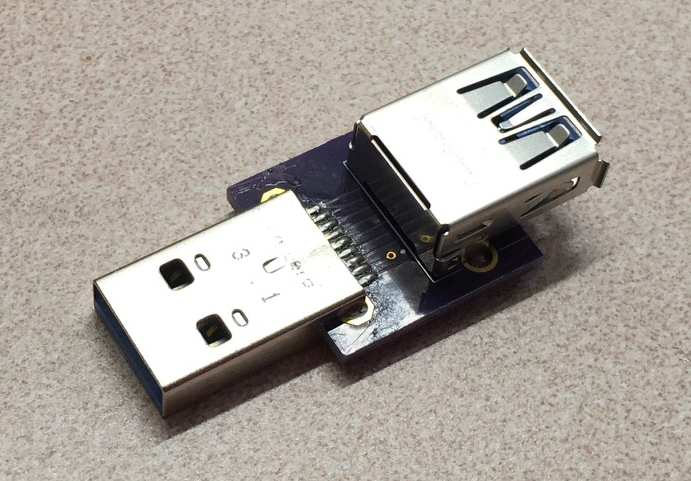denababy I don’t want to burn anything out by using the wrong thing.
This one is known to work (for me) and also listed in a Raspberry Pi FAQ as one of the hubs (link below) that do not backpower:
https://www.amazon.com/gp/product/B014ZQ07NE
One of the output ports (at the end) has a larger current capacity than standard USB specs, which is quite useful for longer USB cables. The hub's power input is a 5.5mm/2.5mm barrel at 12V (if memory serves) -- so you should be able to power it directly from your regular astronomy stuff -- just need to substutute a 2.5mm pin for a 2.1mm pin axial power connector. Some hubs run off 5V; with them, you will need to use a buck/boost converter from 12V.
Unfortunately, there are no USB 3 backpower preventors (there are some USB 2 ones on Amazon, but not good for the speed you need with the large cameras). I constructed my own (AutoDesk Eagle for board layout, and PC board fabricated at OSHPark):

Basically, one-to-one pins but with the 5V pin left disconnected -- I am in fact using it right now with my INDIGO Sky -- also a Raspberry Pi 4 -- with an ACASIS Powered hub that sometimes backpower when temperatures are low. However, you will need surface mount wavesolder equipment to construct it. So, for most people, just look for powered hubs that do not backpower:
https://elinux.org/RPi_Powered_USB_Hubs
(Most of the ones in that list are no longer manufactured, but the first in the list (Anker AH221) is the one that is in the Amazon link I have above. Not all Anker hubs have isolated power lines, like this particular one. I have a couple that don't work.) Note that since it is not bus powered, you must supply power to this Anker hub for it to work.
Chen